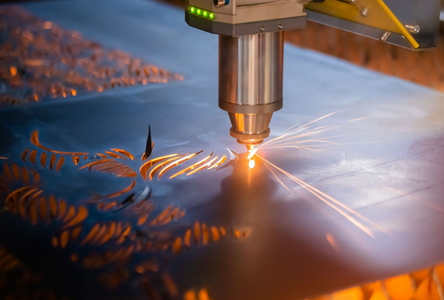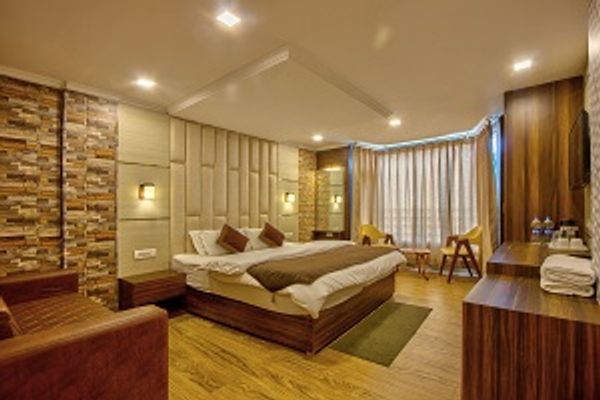How CNC Prototyping Machining Enhances Speed, Precision, and Product Innovation
 Johan Vick
19 May, 2025
10 mins read
10
Johan Vick
19 May, 2025
10 mins read
10

In today’s competitive product development landscape, manufacturers rely heavily on CNC prototyping machining to turn ideas into working physical models faster than ever. By using computer-controlled machinery to remove material from solid blocks, engineers can create functional prototypes that reflect the exact specifications of the final product. Partnering with a trusted CNC prototyping machining service ensures speed, quality, and production consistency.
What Is CNC Prototyping Machining?
CNC prototyping machining is the process of using Computer Numerical Control (CNC) technology to create prototypes from raw material. Unlike 3D printing, which builds parts layer by layer, CNC machining subtracts material using precision tools like mills, lathes, and routers. This makes it ideal for producing high-accuracy prototypes suitable for testing, fitting, and short production runs.
Why CNC Prototyping Matters in Modern Manufacturing
Creating physical prototypes helps bridge the gap between design and mass production. CNC machining allows businesses to test part functionality, evaluate ergonomics, and identify design flaws early—saving both time and money down the line. More importantly, it allows engineers to work with real production materials like metals and engineering-grade plastics.
Advantages of CNC Prototyping Machining
1. Rapid Turnaround
CNC machining enables manufacturers to quickly produce prototypes within days instead of weeks. There are no time-consuming molds or tooling setups required, which accelerates design validation.
2. Superior Accuracy
Tolerances in CNC machining can be as tight as ±0.001 inches, which is crucial for components that require precision. This is especially valuable for industries like aerospace, automotive, and medical devices.
3. Material Flexibility
CNC prototyping machining supports a wide range of materials, including:
- Aluminum
- Stainless steel
- Brass
- ABS
- POM (Delrin)
- Nylon
- PEEK
This versatility allows developers to test mechanical, thermal, and chemical performance of the final product in its intended material.
4. Consistency and Repeatability
Because CNC machines follow exact digital instructions, every prototype will be consistently accurate—ideal for producing multiple test samples or batch evaluations.
5. Cost Efficiency for Low Volume Production
For small quantities, CNC machining offers a cost-effective alternative to injection molding, which requires expensive tooling. This makes it perfect for startups or pilot production runs.
How CNC Prototyping Machining Works
Step 1: CAD Design
Engineers design the prototype using Computer-Aided Design (CAD) software. This model defines every dimension and feature of the part.
Step 2: CAM Programming
The CAD file is translated into a CAM (Computer-Aided Manufacturing) program that generates the G-code. G-code instructs the CNC machine how to move, cut, and shape the material.
Step 3: Machine Setup
Raw material blocks are secured in the CNC machine. Operators install the appropriate cutting tools and calibrate the equipment.
Step 4: Machining Execution
The machine removes material with high-speed rotary tools, shaping the workpiece precisely according to the CAD file.
Step 5: Inspection and Testing
Once machined, the prototype undergoes quality inspection. This may include dimensional verification, surface finish checks, and functional testing.
CNC Prototyping vs. 3D Printing
While both are rapid prototyping methods, each has distinct benefits:
FeatureCNC Prototyping Machining3D PrintingMaterial OptionsMetals, plastics, compositesMostly plastics, resinsTolerancesHigh precision (±0.001")Moderate precisionStrengthStronger, denser partsWeaker, layered constructionSurface FinishSmooth, production-readyRequires post-processingSpeed for One-OffsFast with simple partsFast with complex geometries
Applications of CNC Prototyping Machining
Automotive Industry
Prototypes of engine parts, brackets, dashboards, and connectors are machined to test fit and durability before full-scale production.
Aerospace Sector
CNC prototyping ensures critical parts like turbine blades, housing units, and brackets meet stringent performance standards.
Medical Devices
Functional prototypes for surgical tools, implants, and diagnostic equipment require biocompatible materials and tight tolerances—perfectly suited for CNC machining.
Electronics
Housings, enclosures, and heat sinks can be machined to exact specifications for thermal and structural testing.
Robotics
Complex, moving assemblies like robotic arms demand exact alignment and compatibility that CNC prototypes help validate.
Materials Commonly Used in CNC Prototyping
Metals
- Aluminum: Lightweight and corrosion-resistant, ideal for enclosures and structural components.
- Stainless Steel: Strong and rust-proof, often used in medical and aerospace.
- Brass: Good for electrical conductivity and easy machining.
- Titanium: High strength-to-weight ratio, commonly used in aerospace and medical applications.
Plastics
- ABS: Strong and cost-effective.
- Nylon: Flexible, tough, and wear-resistant.
- PEEK: Heat-resistant and chemically inert.
- Delrin (POM): Offers low friction and dimensional stability.
CNC Machining Tolerances in Prototyping
CNC machines can achieve different tolerance levels based on the application:
- Standard Tolerance: ±0.005" to ±0.010"
- Tight Tolerance: ±0.001" to ±0.003"
Your tolerance requirements will affect production time and cost, so it’s essential to balance performance needs with budget constraints.
Surface Finishing Options
Post-machining, prototypes can undergo various finishes to enhance performance or appearance:
- Anodizing: For corrosion resistance and aesthetics (mostly aluminum)
- Bead Blasting: Creates a uniform matte texture
- Powder Coating: Adds color and surface protection
- Polishing: Improves appearance and reduces friction
- Laser Engraving: For labeling, branding, or serial numbers
Factors Influencing CNC Prototyping Costs
- Material Type: Harder or exotic materials are more expensive.
- Part Complexity: Complex geometries require longer machining time.
- Tolerance Requirements: Higher precision increases inspection and machine calibration time.
- Surface Finish: Additional finishing steps can increase total cost.
- Volume: Higher quantities reduce cost per part but increase upfront investment.
Choosing the Right CNC Prototyping Partner
Technical Expertise
Look for companies with proven experience in your industry and access to advanced multi-axis CNC machines.
Engineering Support
Choose a partner that offers design feedback and DFM (Design for Manufacturability) advice to help you optimize prototypes for efficiency and performance.
Quality Assurance
Your partner should use tools like Coordinate Measuring Machines (CMMs), optical scanners, and in-process inspections to guarantee accuracy.
Turnaround Time
Ask for realistic production timelines and options for expedited services when needed.
In-House Capabilities
A shop that offers machining, finishing, and assembly in one location will save time and reduce coordination issues.
Future Trends in CNC Prototyping Machining
- AI in CAM Software: Smarter programming for better toolpath optimization
- Automated Inspection: Reduces human error and speeds up QA
- Hybrid Machining: Combines CNC and additive for faster iteration
- Digital Twin Technology: Simulates machining outcomes before production
- Cloud-Based Quoting: Faster, more accurate pricing and lead time estimates
Conclusion: Is CNC Prototyping Machining Right for Your Next Project?
If your goal is to validate designs quickly, work with actual production materials, and minimize design risk, CNC prototyping machining is the clear solution. It combines speed, precision, and versatility in a way few other methods can match. Whether you're an engineer developing a new product or a company preparing for mass production, CNC prototyping helps you make smarter, faster, and more reliable decisions.
Written By:
Johan Vick



Hotels at your convenience
Now choose your stay according to your preference. From finding a place for your dream destination or a mere weekend getaway to business accommodations or brief stay, we have got you covered. Explore hotels as per your mood.


